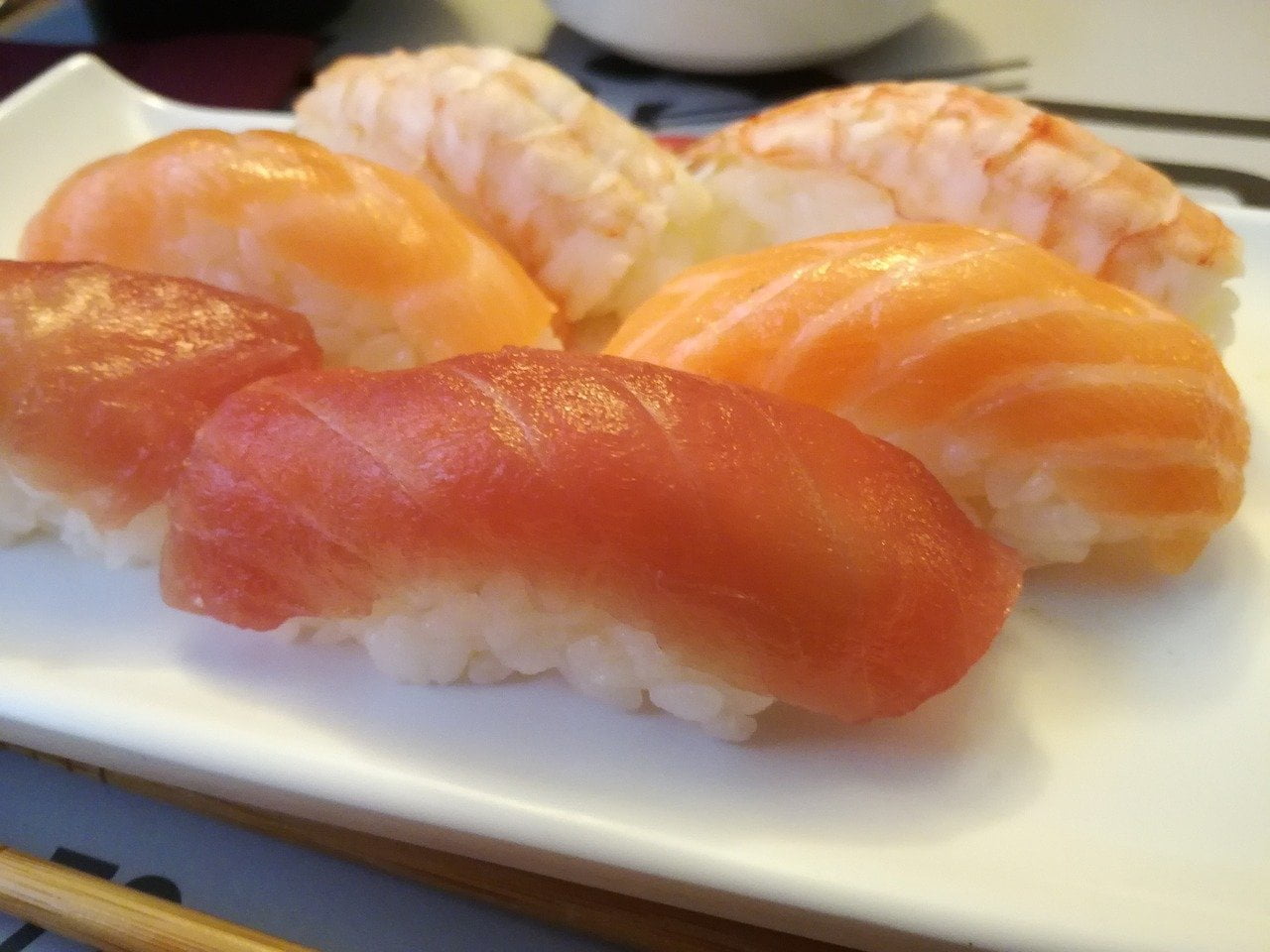
Nigiri vs Sashimi What Are the Differences & Similarities? Fonsly
In simple words, the main difference between sushi, sashimi, and nigiri is the art of preparation. Sushi is vinegared rice served with raw seafood and oftentimes veggies. Sashimi is raw fish or meat served in thin slices without rice. Nigiri is a cross between sushi and sashimi prepared with raw fish slices on top of rectangular mounds of.

Pin by mitchrenfrew on OOLA Infographics Sashimi, Sushi, Types of sushi
Nigiri is characterized by its delicate mound of vinegared sushi rice that acts as a canvas for toppings like fresh fish, seafood, or even certain meats. The pairing of the topping with the seasoned rice provides a harmonious blend of textures and flavors in each bite. On the other hand, sashimi is a purist's delight.

Nigiri vs Sashimi What’s the difference? Drizzle Me Skinny!
Sashimi is higher in omega -3 and protein. 2. Sashimi has fewer calories than sushi. 1. Made from raw fish which may pose a risk for higher levels of mercury. 2. The taste of raw fish may not be pleasing for everyone. 3. Some raw fish in sashimi may contain bacteria such as salmonella or parasites.
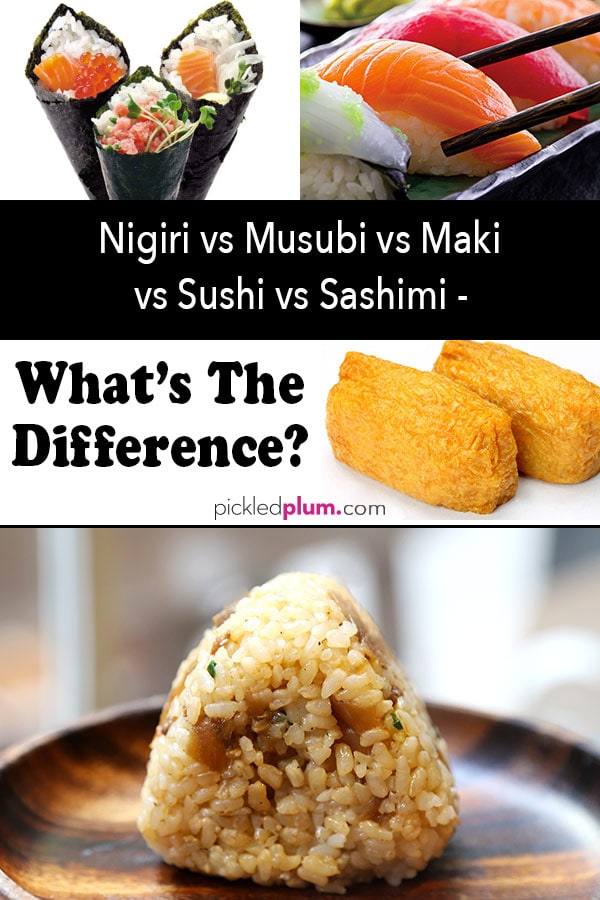
Nigiri vs Musubi vs Maki vs Sushi vs Sashimi What is the difference? Pickled Plum
A: Tamago sushi has a delicate sweetness, while nigiri sushi emphasizes the natural flavors of the fish or seafood. Q: How many calories are in nigiri sushi (with nori)? A: Typically, a single portion of nigiri sushi, accompanied by nori, can provide approximately 50-70 calories.

Pin en Useful tips
Sashimi, being solely raw fish or meat without rice, is a lean source of protein. It provides the same nutritional benefits as nigiri in terms of high-quality protein, omega-3 fatty acids, vitamins, and minerals. The nutritional content of sashimi varies depending on the type of fish or meat chosen.

Calendario 2023 2024 Escolar Nigiri Sushi Vs Sashimi Vs Nigiri IMAGESEE
When it comes to Japanese cuisine, sushi takes the spotlight. Everybody's heard of the iconic maki sushi and hand roll, and most people have tried them. But they're not the only stars of Japanese food! Enter: nigiri and sashimi. Both of these raw fish dishes are delicious, authentic representations of Japanese fare.

Types of Sushi Maki, Nigiri, Sashimi, Temaki & Gunkan Kitchen Pinterest Sashimi, Food and
Food & Drink Sushi V Sashimi V Nigiri: What's the Difference? This post may contain affiliate links and we may earn a commission, but it won't affect our product choices. It's easy to get confused between sushi, sashimi, and nigiri. That's why we're here to clear things up for you! Know what you're eating and enjoy it more with this article.

nigiri vs maki
The Way of Eating. Nigiri is mostly eaten with hands or a chopstick. It's commonly held in the rice part of the sushi not to ruin the fish topping. Sashimi is eaten solely with chopsticks. Since the dish comprises thinly sliced fish and meat, using other utensils or hands to eat sashimi can ruin the food.

Nigiri Platter 8 pcs Hennessy On The Go
But what's the difference between nigiri and maki sushi, for instance? Sushi dishes like maki generally involve more ingredients. However, in the case of nigiri, it's a stripped-back affair that reflects Japanese minimalism itself. A single piece of raw seafood (or meat) is placed on a bite-size rice ball.
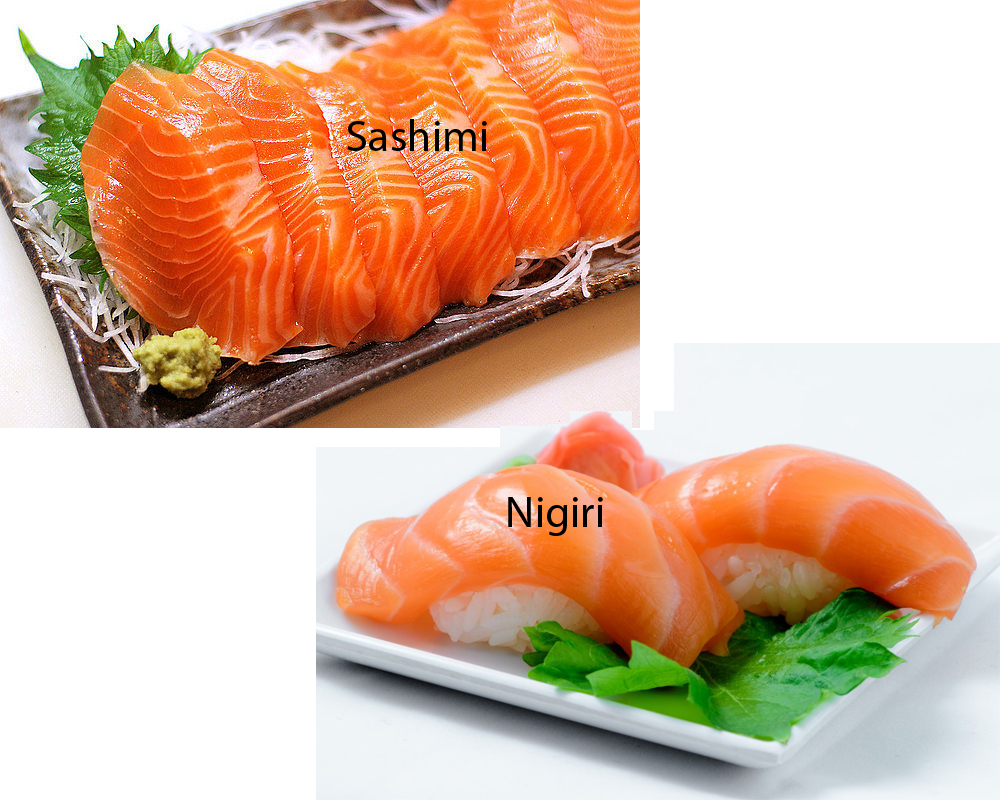
Sashimi vs Nigiri
One of the main differences between nigiri and sashimi is that nigiri is made with rice and sashimi is purely slices of raw fish. However, here's a quick breakdown on other differences:

Nigiri vs Musubi vs Maki vs Sushi vs Sashimi What is the difference? Pickled Plum Japanese
Nigiri consists of thin slices of fish served atop hand-shaped mounds of sushi rice, sometimes with a touch of wasabi. Sashimi, on the other hand, is simply raw fish sliced into thin pieces, served without rice, typically alongside soy sauce, wasabi, and pickled ginger. Contents hide.
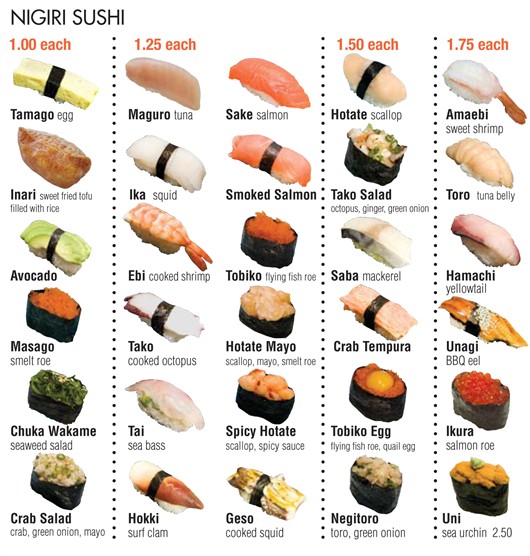
Pin on Sushi
Nigiri is a small slice of fish placed on a mound of sushi rice, whereas sashimi is simply a slice of raw fish served without rice. So while they may be similar in terms of the fish used, the texture and taste profiles of each are quite different. Using nigiri instead of sashimi in a recipe could alter the overall flavor and texture of the dish.

Nigiri vs Sashimi What's the Difference?
Nigiri sushi is that familiar style of sushi made up of an oval-shaped mound of rice with a slice of (usually) raw fish on top. The word nigiri comes from the Japanese nigirizushi, which translates as "hand-pressed sushi." Thus nigiri is a type of sushi where the rice is molded by hand and the fish or other topping pressed by hand atop the rice.

Maki vs Nigiri
The primary distinction between nigiri and sashimi lies in the temperature. The optimal temperature at which fish is enjoyed differs depending on whether it is served with sushi rice or on its own. Nigiri: body temperature (about 36°C /97F) Sashimi: about 12°C/55°F in the mouth.
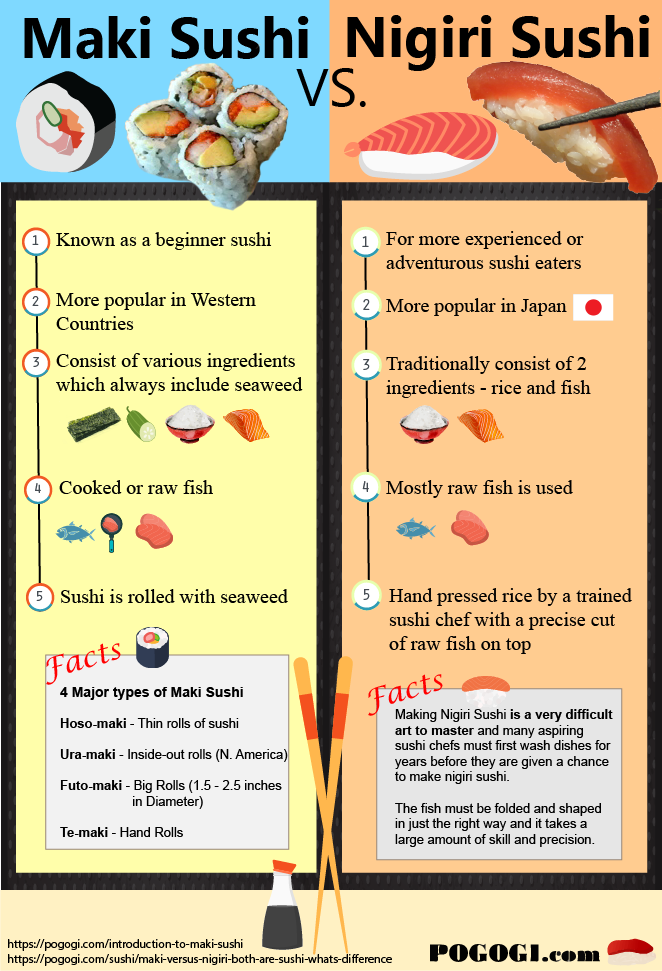
Maki Versus Nigiri Both Are Sushi, But What's The Difference? POGOGI Japanese Food
Nigiri is a popular type of sushi that consists of a small, hand-pressed mound of sushi rice topped with a thin slice of raw fish, such as salmon, tuna, or eel. The sushi rice is seasoned with vinegar, sugar, and salt, giving it a distinct tanginess that compliments the fish.
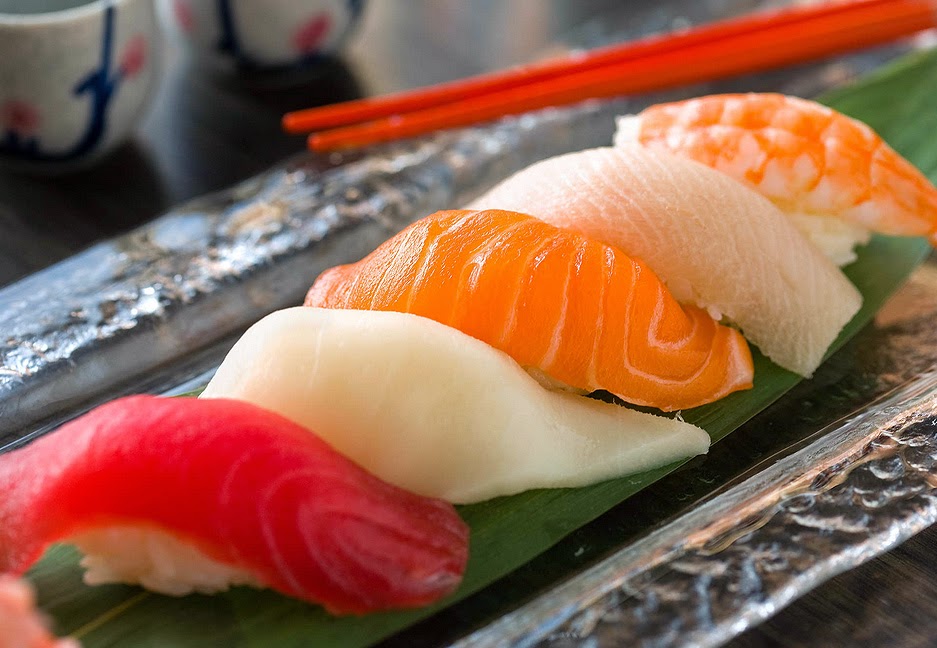
Nigiri Sushi Recipe
Sushi Vs. Sashimi Vs. Nigiri Vs. Maki: What's The Difference? Many people enjoy going out for sushi, but very few of us have an understanding of the vast array of items on the menu at a Japanese restaurant. The world of sushi can be an intimidating one, with words like sashimi, nigiri, and maki.